A semi-serious search of maybe a dozen history books and uncountable internet sites has led to the following – Priests come in black, only, but there are knights of many colors. The were some red knights, three to be precise, one was Welsh, a second Cornish, and the third a Breton. There was also a green knight who was a hero in many of the Arthurian legends. In the 1970s a blue knight first appeared in a novel, then in a film, and finally in a TV series starring George Kennedy. A white knight is a stock character in many forms of literature, there are black knights by the dozens, the most notably being Edward of Woodstock, although he is a bit-long-o’the-tooth now (he was born in 1330).
The postcards you see below recently came to me for the grand total of $5-American and they are as fresh as new. It may be that the set has seen the light-of-day twice: perhaps the day the dealer found them and the day he sold them to me.
Each card is an elaborate rendering of a painting. There is something quite strange about them, I am unable to name it, but I think I have seen at least two of the paintings in person (Drake and Raleigh) in a gallery or museum somewhere, but long ago. A good guess may be in the British National Portrait Gallery, just off Trafalgar Square in London.
The only clue to their making is the words, “WORTHS SERIES” in all caps under the words, POST CARD. I have been unable to find a postcard publisher by the name of Worth or Worths, so I am left cold, since I have no training in data research, I’ll leave this alone. (Perhaps someone could comment.)
The six portraits are of Sir Francis Drake, Sir Humphrey Gilbert, Sir Richard Grenville, Sir John Hawkins, the Reverend Charles Kingsley, and Sir Walter Raleigh. I make no pretenses to know much of any of these Subjects of the Crown, so for the unenlightened let me start with the priest, since he seems to be the odd-man-out – coming from the 19th century (1819-1875) rather than from the Elizabethan Era of the 16th century.
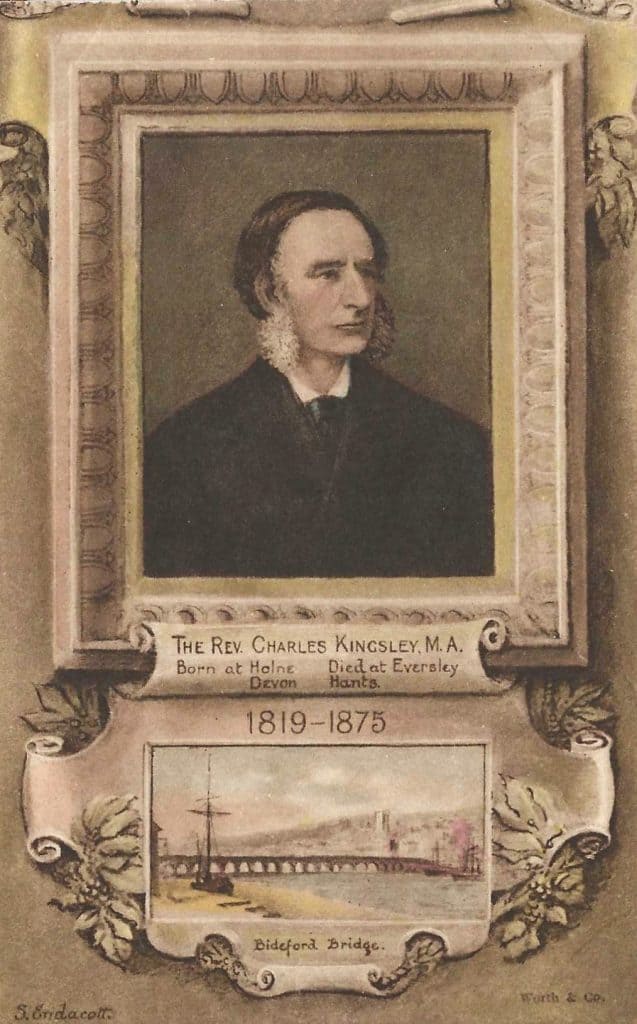
The word “polymath” was used to describe the Reverend Charles Kingsley. (Don’t be ashamed that you are reaching for your dictionary, I had to look it up, too!). Charles was born when James Monroe was president of the United States. He was educated at the Bristol Grammar School and before his graduation from Kings College in 1842, he studied at Magalene College in Cambridge. Like many of his era he chose the priesthood over politics, although he served as chaplain to Queen Victoria for a few years before he left palace employment to become a professor of modern history at Cambridge. Ultimately, he was appointed as a private tutor to the Prince of Wales (later King Edward VII). Kingsley’s last official duty was as a canon of Westminster Abbey. He died at age 55 in 1875.
Kingsley’s writings (over 40 titles) are the most notable accomplishments of his life. He wrote many history books with Anglo-Saxon assertions, he hated the Irish (often calling the Irish white chimpanzees and never denied it), he was pompous and arrogant, and exhibited open racist opinions while he sat on a royal committee concerned with the governance of Jamaica. His one redeeming character trait was his friendship with Charles Darwin. Dawin, by all accounts, blunted many of Kingsley sharp opinions.
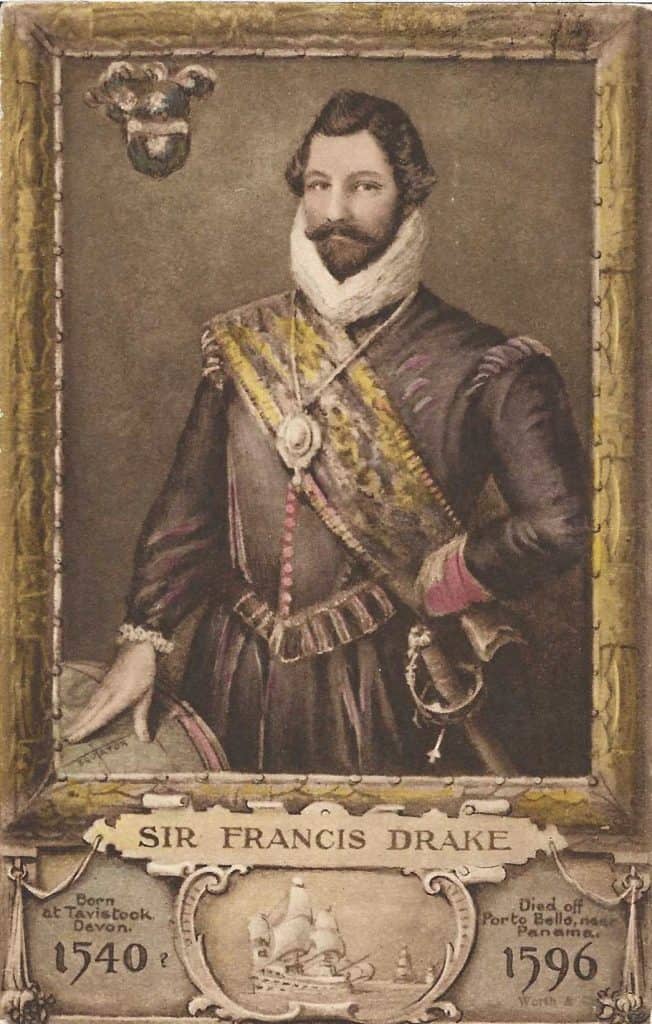
Sir Francis Drake, AKA the Dragon of Devon, was born around 1540 and with little ceremony was abandoned at the home of a relative who was a prominent English sea captain living in Plymouth. (Finding if he received any formal education has been a chore.) At around age 32, Drake was offered the opportunity to captain his own vessel and create a mission of his own design in privateering along the Spanish Main. Never shy, he succeeded and in just three years managed to finance his own plan to be the first Englishman to circumnavigate the world. He set sail in December 1577; his voyage lasted nearly three years. He was awarded a knighthood by Queen Elizabeth in 1581, which he received aboard his galleon the Golden Hind. Drake died in Panama on January 28, 1596, at aged 56.
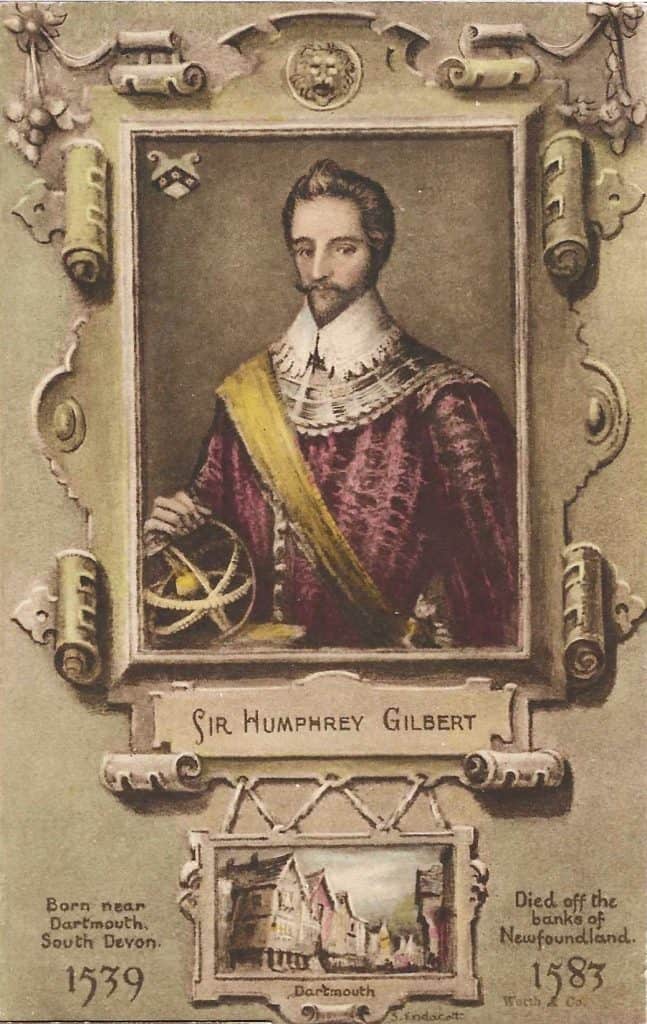
Among this cadre of knights, Sir Humphrey Gilbert is likely the most sophisticated, best educated, and most colorful. He was born at Greenway House in the village of Brixham, England, around 1539. His early schooling was at Eton and he graduated from Oxford where he studied naval navigation and the art of war. His linguistic skills were superlative for he was fluent in French, Spanish, and English. In his late twenties, Gilbert developed an interest in exploring North America and petitioned the Queen for permission to find a Northwest Passage to China because the known routes were controlled by the Spanish and the Portuguese. After a successful conquest of Newfoundland in 1583, during his return to England, Sir Humphrey died at sea when his ship was lost in a storm.
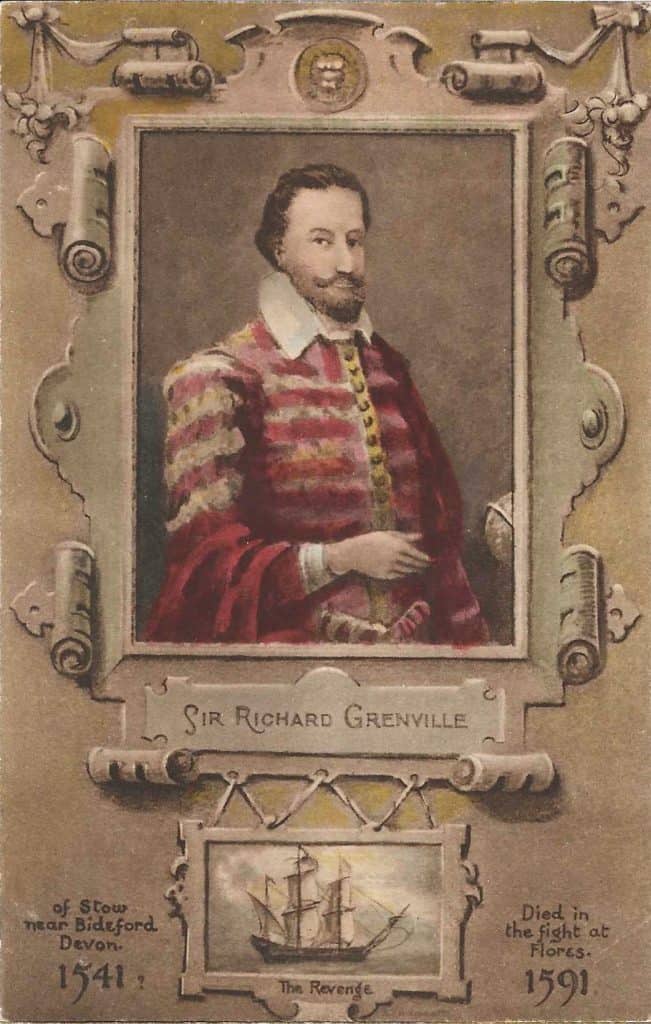
Sir Richard Grenville was a miscreant of the highest order. At age 20 on the Strand (a main London thoroughfare) he murdered a school rival named Robert Bannister by stabbing him with a sword then leaving him in the street to die. His punishment was banishment from the city for three months, but he was acquitted of public dueling and manslaughter. Within a few years of this he inherited his grandfather’s estate, married the daughter of a neighbor, and was appointed High Sheriff of Cork. Grenville pursued a military career, but first petitioned the Queen to leave England to serve a foreign prince, the Holy Roman Emperor Maximillian who was then fighting the Turks in Hungary. He followed that caper with an excursion to Ireland where some historians claim, in the vernacular that, “… he ruined everything he touched.” Grenville was involved in many of England’s “years of trouble,” including the Roanoke Colony disaster and failed preparations for war against the Spanish. At the end of his days, his last bad decision came after being appointed to command the Revenge, a new style warship designed for use against the Spanish Armada. In the Battle of Flores, Grenville was said to have wanted to blow up his ship rather than give up the fight, He died without distinction of his wounds several days later, screaming that his men were “traitors and dogs.”
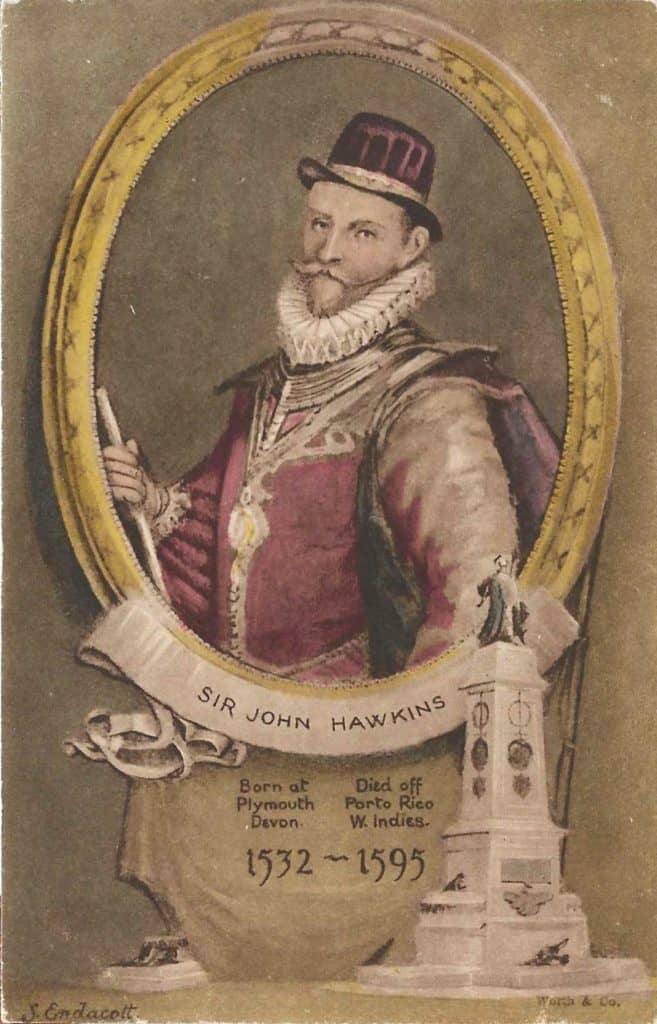
Sir John Hawkins was another naval hero who died at sea. He is remembered today as the first Englishman to profit from the sale of enslaved people. And, he was a very accomplished thief. Born in 1532, he began his career by carrying newly captured slaves from Guinea to the West Indies. He made at least three slave-trading voyages, each of which provoked conflict with the Spanish since they prohibited all foreigners from trading within their colonies. After two profitable cruises, his third voyage was a disaster. Near the village of Veracruz (in modern Mexico) he took refuge to make repairs and find fresh water. He was attacked by the Spanish in the harbor, and they successfully destroyed four of his six ships. In 1588, he was knighted for gallantry for his endeavors in the battles with the Spanish Armada. For the next seven years, Hawkins was involved in several palace intrigues, including a one-man defeat of a plot to overthrow the Queen. Hawkins liked nothing better than a good fight and in 1595, he set sail with his cousin Francis Drake, with twenty-seven ships to attack Spanish investments in the Caribbean. Hawkins died at sea, in the waters off Puerto Rico.

Sir Walter Raleigh is the best known of these historic personalities and enjoys wide name recognition in North America, Europe, and Australia. He had many noteworthy roles in the reign of Elizabeth I, and it is commonly known that he was a crown-favorite and remained so until he secretly married one of the queen’s ladies-in-waiting in 1591 without the queen’s permission. For this one indiscretion he and his wife were sent to the Tower of London. He was born in Devon, but little is known about his early years except that he was sent to France in his teens to “observe” the religious civil wars. He received his knighthood in 1585. In 1594, Sir Walter learned about a “City of Gold” in South America. His book about his experiences is credited for the Legend of El Dorado.
That was not the end of Raleigh, but after a second attempt in search of El Dorado, part of which was in violation of the 1604 treaty with Spain, he was arrested on his return to England and executed in 1618.
Worth and Co. have many cards on ebay.
None of these, mostly old buildings inside and out. Quite lovely cards.
You know, these may all relate to his novel “Westward Ho.” It’s been many years, actually 60, come to think of it, since I’ve read it, but take a look. Good luck. Lovely cards!
I was aware of Drake and Raleigh, but the other men featured here were unfamiliar to me.
Thank you for publishing this fascinating article. Apologies for my late comment; I am definitely running behind. Worth Series Postcards were published by Worth’s Art Gallery Exeter England which was located in the historic Mol’s Coffee House famous for Raleigh, Drake, and probably others that you mention.